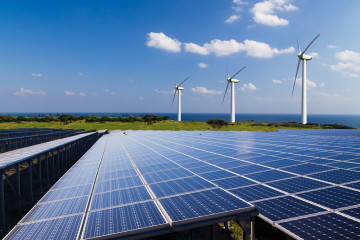As energy transition continues to take hold globally, the oil and gas industry stands in a central position of influence.
On one hand, these fuels are major contributors to carbon emissions. On the other hand, oil and gas companies have unique expertise, resources, and incentives to take a leading role in the shift toward more sustainable energy systems.
In what has been described as a “moment of truth” for the industry, it’s critical for business leaders to be aware and vigilant of the risks and opportunities presented by a global movement toward cleaner energy.
What does energy transition mean for oil and gas?
Oil and gas aren’t going away anytime soon. While research from the International Energy Agency (IEA) has suggested that global demand for these energy sources could peak by 2030, McKinsey asserts that “fossil fuels such as oil and natural gas will continue to make up a significant share of the energy mix by 2050, partly because of how they combine affordability and security of supply.”
With that said, there are clear market risks associated with the decreasing demand for petroleum-based products, along with policy/legal risks, technology risks, and reputational risks faced by companies in this space.
Understanding oil and gas transition risks and opportunities
At Antea Group, we are deeply focused on helping companies navigate the novel challenges of an evolving global energy infrastructure. Using the profile of an upstream oil and gas company in the United States, here’s an overview of transition-related risks as defined by the Task Force on Climate-Related Financial Disclosures (TCFD), highlighting some of the latest legislative and regulatory action.
Policy and legal risks
The most apparent and forthcoming policy risk, impacting all businesses, is the recent SEC ruling requiring disclosure of GHG emissions data. That policy and others like it can impose compliance burdens on oil and gas companies and may increase the level of scrutiny on public reporting. Oil and gas companies should also be aware of the following examples of local and national pricing schemes:
- A national carbon tax, while unlikely in the short term, will significantly increase compliance costs, especially impacting heavy industries like power production and manufacturing earlier.
- The American Petroleum Institute (API) has supported the idea of a national carbon price but there is no consensus on implementation details.
- The Regional Greenhouse Gas Initiative (RGGI) is a cooperative effort among 12 eastern states aimed at reducing CO2 emissions from power plants. It employs a market-based system where regulated power plants must acquire CO2 allowances priced at $2.50 per short ton of emissions.
Additionally, it’s important to be aware of these changes in access to leases and production costs:
- One climate-related action from the Biden administration was slowing the release of federal leases, increasing exploration and production costs. Higher royalty rates and the rescindment of non-competitive leases are adding to the financial burden.
- New reclamation policies for abandoned wells and stricter regulations on methane venting and flaring can further increase production costs.
There is also an anticipated decrease in overall domestic demand for oil and gas as clean power targets from the government take shape. An executive order for the U.S. in December of 2021 established the following goals:
- 100% carbon-free electricity by 2030, with half being locally supplied clean energy.
- 100% zero-emission vehicle acquisitions by 2035.
- Net-zero emissions building portfolio by 2045, including a 50% reduction by 2032.
Since 2018, 19 states have increased the ambition of their renewable or clean energy targets.
Technology and market risks
The adoption of electric vehicles and emission standards is having a substantial impact on the oil and gas industry, and demand for fossil fuels. For example:
- Emissions standards set by the California Air Resources Board (CARB) have been adopted in 17 states, including California and Washington D.C. These states are also committed to zero emission vehicle (ZEV) targets.
- The Environmental Protection Agency (EPA) has introduced the most stringent emissions standards to date for heavy-duty vehicles, further reducing fossil fuel demand.
From a market standpoint, technologies such as renewables (solar and wind), electric vehicles, and battery storage are achieving cost parity with traditional fossil fuels more quickly than anticipated. This makes them more competitive and attractive alternatives.
Meanwhile, carbon capture technology is being developed, with support from investments in the oil and gas sector. Despite the ongoing effort, carbon capture has not yet proven to be cost-effective or scalable, posing a significant risk to its viability as a long-term solution for reducing emissions.
Reputational risks
Understandably, oil and gas companies have become a prime target of climate activism, due to perceptions around being a core part of the problem. Public criticism of new exploration projects and oil and gas operations generally are growing more common – divestment campaigns being one example.
Increasing regulatory pressure and continued stakeholder expectations to disclose environmental and social impacts are presenting increased costs associated with business operations.
Overprepare to avoid being overwhelmed
Oil and gas companies have a lot on their radars right now, in an industry brimming with both excitement and uncertainty. Understanding the evolving regulatory landscape and the various risks at play in connection with energy transition is crucial to effectively guiding your business into the future.
Antea Group is here to help. Learn about our energy transition consulting services.
Want more news and insights like this?
Sign up for our monthly e-newsletter, The New Leaf. Our goal is to keep you updated, educated, and even a bit entertained as it relates to all things EHS and sustainability.
Have any questions?
Contact us to discuss your environment, health, safety, and sustainability needs today.





